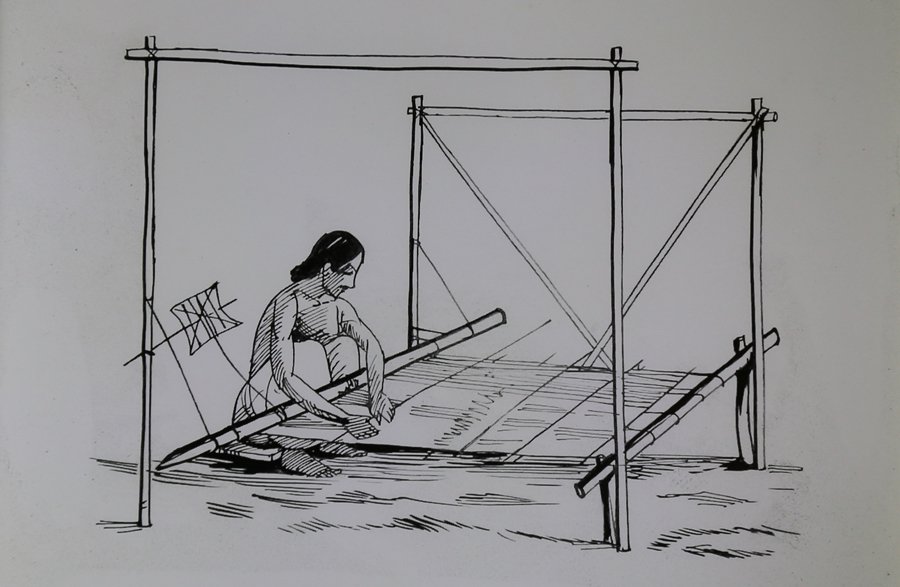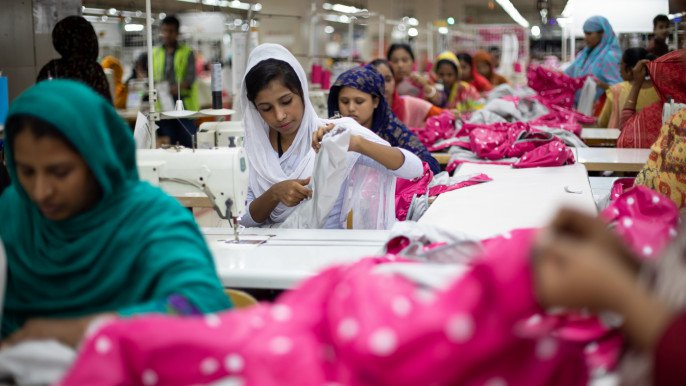Published in Dhaka Tribune on January 05, 2018

Rarity of source material, a reluctant National Museum, the wait for the ECNEC nod and yet to be approved funding are playing major roles in pushing back the chances, though dim right now, to bring back the legendary fabric
Researchers claim to be close to finding the exact genus of cotton used in producing the fabled muslin cloth.
A 10-member team of Bangladeshi researchers have been working with the government, in an effort to revive the production of muslin by using source cotton and redeveloping spinning techniques.
Team leader, Professor Dr M Monzur Hossain, director of Institute of Biological Sciences from Rajshahi University (RU) told the Dhaka Tribune: “We have the cotton, we have the unique craft. While the product was lost from the region in the past, we are certain that Phuti Karpas (Gossypium arboreum var neglecta) still exists in Bangladesh.”
This particular variant of cotton plant however is hard to find as it only grew on a short stretch on the banks of the Meghna river in Dhaka. Ever since the then British Empire started industrializing, they began to push their own cotton onto the sub-continent, forcing many of the weavers out of business.
The level of their cruelty in eliminating the fabric was documented by William Bolts a Dutch merchant in his memoir, Considerations on India Affairs, where he described how the British Raj, created a level of pressure no weaver could live under and destroyed their looms and in extreme cases broke their fingers.
 Then a famine followed that wiped out the cultivation of the crop entirely.
Then a famine followed that wiped out the cultivation of the crop entirely.
The team of researchers have been looking everywhere for the muslin cotton.
Professor Mustafizur said: “We have surveyed various regions of Bangladesh for Phuti Karpas. We also asked people for samples of the original muslin cloth to study them. We have received samples from Barguna and Brahmanbaria.”
There are some particular areas in the country the team is focusing on. Dr M Firoz Alam, another researcher from RU said: “Currently, we are experimenting with the samples that we have on hand. We will advertise in newspapers and radio channels about buying muslin to match with what we have developed and to make sure we are on the right track.”
What led to this research?
On October 2014, Prime Minister Sheikh Hasina, asked officials to work on reviving muslin during a visit to Textile and Jute Ministry. Since then, the government has allocated Tk13crore for a project called: “Restoring the technology of creating muslin clothing to create golden yarn and reviving muslin production.” However, Bangladesh Handloom Board (BHB) website says the cost of the project is estimated to be at Tk14.50crore.
The ministry aims to implement this initiative through a project that has been on its course since January this year and is expected to reach its target by December 2019. Currently, the project is awaiting approval from Executive Committee of the National Economic Council (ECNEC).
Where does the project stand?
With an allocation of Tk35lakh for the project, the team began their work two years ago and has been on the hunt for Phuti Karpas, in remote areas like Langadu in Rangamati.
So far, they have successfully collected various samples but the team did not want to disclose their exact location. Monzur said: “We are collecting samples of cotton from different areas and testing to see if they match the characteristics with the pattern of Phuti Karpas. We are very hopeful.”
The samples are currently undergoing testing in various laboratories.
Researchers have said it will take three years from 2017 to 2019 for them to complete their project and if there is a success, they will begin the second phase that will last for an additional three years.
Professor Mustafizur Rahman from Agronomy and Agricultural Extension Department (AAED) at RU feels it is not easy to find muslin in a country where it has been lost for 400 years.
The researchers however said they have been requesting the Bangladesh National Museum in Dhaka to help them study the muslin kept in the museum. It appears the museum is unwilling to cooperate and has rejected the researchers’ requests.
Director General of Bangladesh National Museum Faizul Latif Chowdhury says they cannot handover the treasure to anyone. Adding: “We only have two samples and the risk of damage is too high. This is why I have declined to hand them over.”
Faizul explained it isn’t normal for the government to ask for materials from the museum and said: “If required, the government can buy them from other countries.”
The research team has already visited the Victoria and Albert Museum in UK that has a collection of over 300 muslin clothing. The museum not only helped the Bangladeshi researchers but also assured that they will sign a Memorandum of Understanding (MoU) to support their research if needed.
Muslin is tricky to make since it requires specific fibers and the use of small hands for weaving, Monzur said, adding: “If we can find the cotton, we will need do a DNA profiling that might cost around Tk4crore.
“We have the support for this study, but the funding has not been approved yet which is why we cannot move forward with our research.”
Researchers said they will try both the old method of weaving muslin by hand and try and use a machine to achieve the same result.
The success of weaving muslin depends 50% on the cotton and 50% on the weaver. It requires both dry and wet seasons for production.
“Muslin will not shrink in water. It is a stronger fabric. A high quality weaving muslin requires nimble fingers which young girls have. As we do not have any expert weavers left, we are training weavers under this project”, said Mustafizur.
Despite the fact that India failed to revive muslin after the formation of a commission in 1956, the researchers remain hopeful.
Mustafizur said: “We hope it is possible. We will require chemicals, salaries for scientists, technical training, use of new devices, in addition to hosting trials in multiple locations. All of this is not possible with the block fund allocated to us. We will need more funds soon and we require the ECNEC approval as soon as possible.”
There are some doubts on whether the team of researchers will be able to find the muslin cotton in Bangladesh anymore.
In 2016 February, a month-long Muslin Festival was held at the National Museum co-organized by Drik’s Bengal muslin team and Aarong.
Saiful Islam, CEO of Bengal muslin, said he was not very optimistic about this team of researchers being able to find the exact strain of muslin cotton in Bangladesh anymore.
“We have been researching since 2014. We were unable to find the exact strain of muslin cotton in Bangladesh.
“We have a few samples from abroad that we are trying to duplicate in Bangladesh,” he told the Dhaka Tribune.
 CPD RMG Study Stitching a better future for Bangladesh
CPD RMG Study Stitching a better future for Bangladesh




